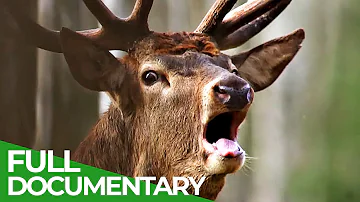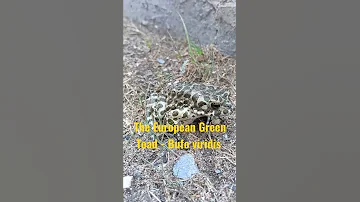
European Green Toad
Bufotes viridis

Meet the European Green Toad
The European Green Toad is a medium-sized amphibian known for its striking green patches on a pale, often white or greyish background. This toad is highly adaptable and can be found across a wide range of environments, from urban parks and gardens to arid steppes and coastal regions. Its skin secretes mild toxins as a defense mechanism against predators. During the breeding season, males produce a distinctive, melodic trilling call to attract females. The species is resilient and has adjusted well to human-altered landscapes, although some populations are declining due to habitat loss.
Classification
Amphibian
Habitat
Open areas with loose soil near freshwater sources
Diet
Carnivore
Lifespan
6-10 years
Conservation
Least Concern
Weight
20-80 grams
📖Fascinating Facts
Color-changing Ability
European Green Toads can alter the brightness and saturation of their green markings to camouflage themselves in different environments.
Melodic Mating Calls
Males produce a long, melodious trill during the breeding season, which can be heard from considerable distances on warm nights.
Urban Survivors
This species is frequently found in urban areas, adapting to gardens, parks, and even city outskirts where freshwater is available.
📋Detailed Description
The European Green Toad (Bufotes viridis) is a robust, medium-sized amphibian, typically measuring 6–10 cm in length, with females generally larger than males. Its dorsal surface is characterized by irregular, bright green blotches set against a pale background that ranges from white to grey or beige, providing effective camouflage in open habitats. The skin is covered in small warts, some of which secrete mild bufotoxins as a deterrent to predators. The ventral side is usually whitish and smooth. Eyes are prominent, with horizontal pupils and a golden iris, aiding in nocturnal vision. The parotoid glands, located behind the eyes, are well-developed and play a role in toxin secretion. Limbs are relatively short and sturdy, adapted for walking and short hops rather than long jumps. The species exhibits sexual dimorphism, with males possessing nuptial pads on their forelimbs during the breeding season to aid in amplexus. European Green Toads are primarily nocturnal, emerging at dusk to forage and mate, and are known for their tolerance of arid and saline environments, often inhabiting areas unsuitable for many other amphibians.
💡 Did you know?
Unlike many amphibians, the European Green Toad can survive in semi-arid environments and even tolerate some brackish water.
🔬Research & Sources
Wikipedia Summary
The European green toad is a species of true toad found in steppes, mountainous areas, semi-deserts, urban areas and other habitats in mainland Europe, ranging from far eastern France and Denmark to the Balkans, Western Russia and the Caucasus. As historically defined, the species ranged east through the Middle East and Central Asia to western China, Mongolia and northwestern India, and south through Italy and the Mediterranean islands to North Africa.
Last Modified: 5/1/2025
🎭Behavior & Social Structure
European Green Toads are largely solitary outside of the breeding season, occupying defined home ranges. They are crepuscular to nocturnal, remaining hidden under stones, in burrows, or beneath vegetation during the day to avoid desiccation and predation. Foraging occurs at night, with individuals preying on a wide variety of invertebrates, including insects, spiders, worms, and occasionally small vertebrates. They employ a sit-and-wait hunting strategy, relying on their camouflage and sudden lunges to capture prey. During periods of drought or extreme heat, they may aestivate in self-dug burrows or use abandoned rodent holes. Social interactions are most pronounced during breeding, when males congregate at temporary or permanent water bodies and engage in vocal choruses to attract females. Aggressive interactions between males, including wrestling and vocalizations, are common in dense breeding aggregations.
👶Reproduction & Life Cycle
Breeding typically occurs from March to June, triggered by rising temperatures and rainfall. Males arrive at breeding sites first and produce a distinctive, melodious trill that can carry over long distances. Amplexus is axillary, with males clasping females around the forelimbs. Females lay long strings of eggs, often containing 9,000–15,000 eggs per clutch, which are attached to submerged vegetation or debris. Embryonic development is rapid, with hatching occurring within 3–8 days depending on temperature. Larval (tadpole) development lasts 1–3 months, after which metamorphosis into juvenile toads occurs. There is no parental care post-oviposition. In some regions, multiple breeding events may occur if conditions allow, and hybridization with closely related Bufotes species has been documented in overlapping ranges.
🛡️Adaptations & Survival
Bufotes viridis exhibits several adaptations for survival in variable and often harsh environments. Its cryptic coloration and warty skin provide camouflage and protection from predators. The ability to tolerate brackish and saline water, as well as arid conditions, is facilitated by physiological adaptations in osmoregulation and water retention. The species can aestivate during unfavorable conditions, reducing metabolic activity to conserve water and energy. The secretion of bufotoxins from skin glands deters many would-be predators. Behavioral plasticity, such as the use of a wide range of breeding sites (including artificial water bodies), and a generalist diet contribute to its ecological success. Rapid larval development allows exploitation of temporary water bodies before they dry up.
📚Research Sources
🎨Cultural Significance
The European Green Toad has featured in European folklore as both a symbol of transformation and, at times, as a harbinger of misfortune, reflecting the broader cultural ambivalence toward amphibians. In some Mediterranean cultures, toads were believed to possess medicinal or magical properties, and their presence was sometimes associated with rain or fertility. In modern times, the species is occasionally kept in captivity for educational purposes and is valued as a bioindicator of environmental health due to its sensitivity to pollutants and habitat change.
🔬Recent Research & Discoveries
Recent genetic studies have clarified the taxonomy of the Bufotes viridis complex, revealing cryptic species and significant genetic diversity across its range. Ongoing research focuses on the species' remarkable tolerance to saline environments, with implications for understanding amphibian osmoregulation. Studies on urban populations have provided insights into behavioral plasticity and adaptation to anthropogenic landscapes. Conservation research is increasingly concerned with the impacts of habitat fragmentation and climate change, as well as hybridization dynamics with related species in contact zones.
🎥Wildlife Videos

Best Of Frogs | Top 5 | BBC Earth
Welcome to BBC EARTH! The world is an amazing place full of stories, beauty and natural wonder. Here you'll find 50 years worth ...
BBC Earth

Facts About the European Green Toad
Explore the Fascinating World of the European Green Toad | Fun Facts and Unique Features Welcome to our channel! Join us as ...
Fun Facts About Animals

Europe's Great Wilderness | Episode 2: Europe's Green Heart | Free Documentary Nature
Europe's Great Wilderness - Episode 2: Europe's Green Heart | Wildlife Documentary Watch 'Europe's Great Wilderness - Episode ...
Free Documentary - Nature

The Secrets Of The Frog | Our World
Most people perceive frogs as cold, wet, slimy, ugly creatures that give us warts on the slightest contact. The closer we look at ...
Our World

Frogs - The Thin Green Line (Documentary Full Length)
TheAnimalArea

Broasca râioasă verde the European green toad - Bufo viridis
Wildlife Moldova
🌍Habitat Information
The European Green Toad typically inhabits Open areas with loose soil near freshwater sources environments. European Green Toads have adapted to their environments with specialized features and behaviors.
Primary Habitat:
Open areas with loose soil near freshwater sources
More detailed habitat information will be available soon.
🛡️Conservation Status
The European Green Toad is currently classified as Least Concern. Conservation efforts are crucial for preserving this species for future generations.
Common Threats:
- 🏠Habitat loss and fragmentation
- 🌡️Climate change impacts
- 🎯Hunting and poaching
- 🏭Human-wildlife conflict
⚠️Threats & Conservation Challenges
Although classified as Least Concern by the IUCN, the European Green Toad faces localized threats, including habitat loss due to urbanization, agricultural intensification, and wetland drainage. Road mortality, pollution (especially from pesticides and fertilizers), and the introduction of invasive species also pose risks. In some areas, populations are declining due to fragmentation and the loss of suitable breeding sites. Climate change, with increased frequency of droughts and extreme weather events, may further impact breeding success and larval survival. However, the species' adaptability to disturbed and urban environments has allowed it to persist in many regions where other amphibians have declined.
🔬Scientific Classification
Scientific Name
Bufotes viridis
Classification Hierarchy
🔍 About Taxonomic Classification
Taxonomic classification is a hierarchical system used by scientists to classify and organize living organisms based on shared characteristics and evolutionary relationships.
The system moves from broad categories (Kingdom) to increasingly specific ones, with each animal's scientific name typically consisting of its Genus and species.
📝Community Notes
Share your observations and insights about the European Green Toad with our community of wildlife enthusiasts.
Join Our Community
Sign in to share your observations and connect with fellow wildlife enthusiasts.
Sign In to ContributeNo community notes yet
Be the first to share your observations about the European Green Toad!
Explore European Green Toad
Select a tab above to learn more about this amazing animal.
📸Photo Gallery
No photos available for this animal yet.
🌟Discover More Wildlife
Continue your journey of discovery with more fascinating animals from our database
